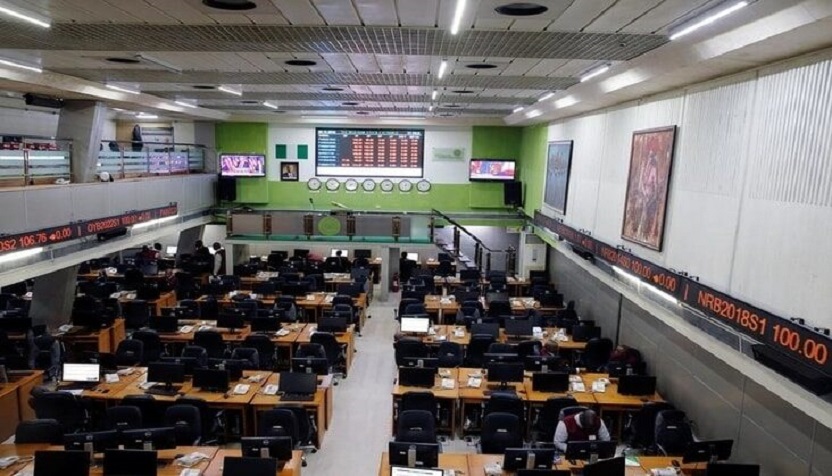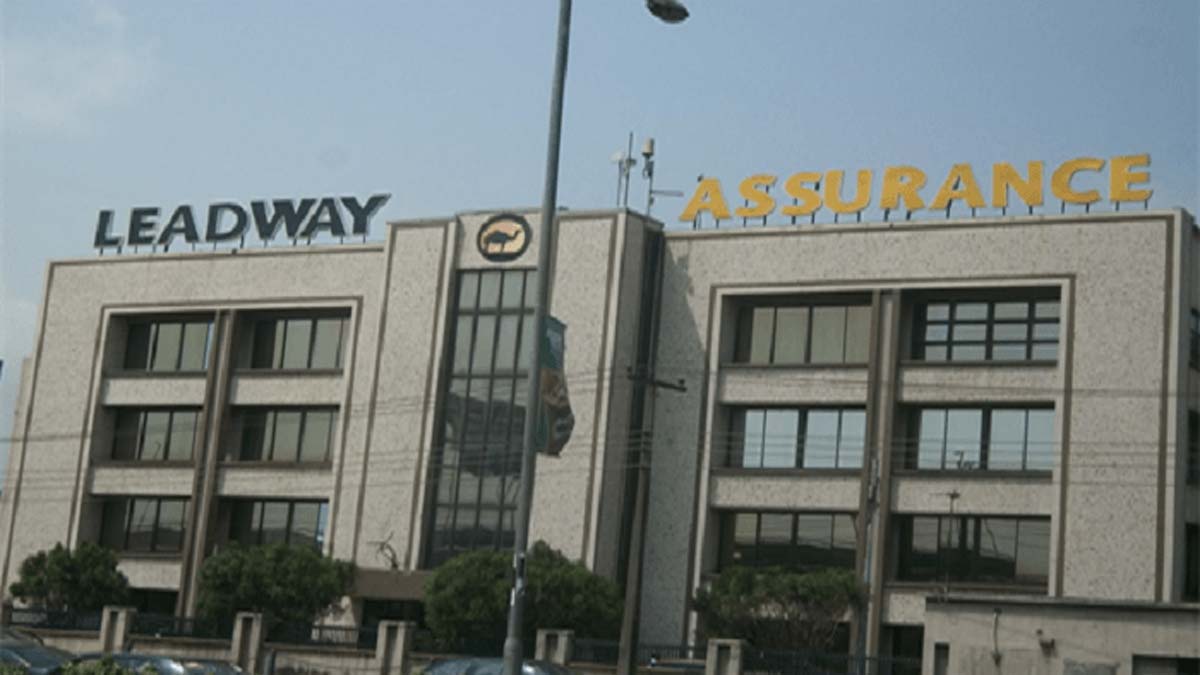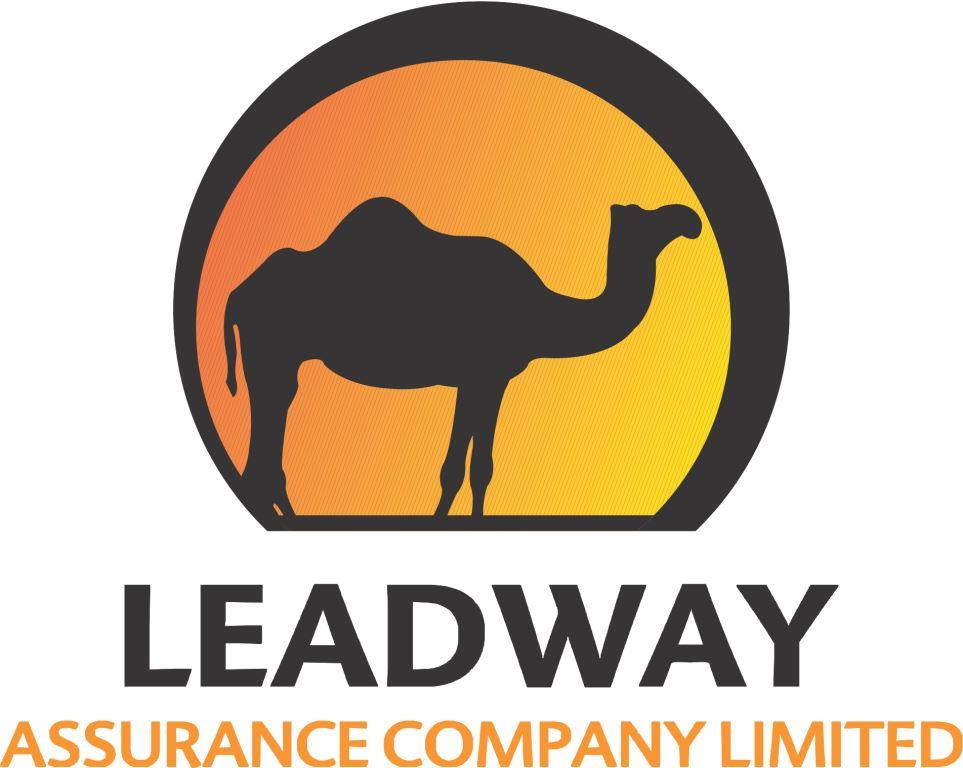Economy
New Solvency Requirement will Boost Financial Health of Insurance Firms—Expert

By Modupe Gbadeyanka
Managing Director of Leadway Assurance Company Limited, Mr Oye Hassan-Odukale, has commended the National Insurance Commission (NAICOM) for introducing the Tier-Based Minimum Solvency Requirement (TBMSR), saying it was long overdue.
According to the insurance expert, with this restructuring, insurers do not have to be compelled to increase capital to underwrite risks that stress their capital without delivering commensurate returns to capital providers/shareholders.
Mr Hassan-Odukale believes that the restriction will foster the emergence of players with capacity to become retail specialists or become specialist underwriters of big-ticket risks in critical sectors of the economy, such as the aviation and oil & gas, whilst accelerating the growth of the industry and its contributions to the Gross Domestic Product (GDP) of the country.
The Leadway Assurance chief, who doubles as Chairman of the Sub-Committee on Publicity and Communication of the industry’s Insurers’ Committee, said the introduction of the solvency requirement for insurers in Nigeria commencing January 1, 2019, will help to restructure the market in a way that insurers can choose which part of the consumer segment (retail, commercial or industrial) is best served based on the capital fund that it holds or is able to deploy.
“The news of NAICOM’s introduction of TBMSR is a positive one. I am confident that it is an initiative with potential upside for the industry to grow and take its rightful position as a formidable contributor to our national economic activities, growth and development as it is in developed economies.
“It is high time we moved beyond the 0.3 per cent contribution to GDP and improve our ranking within the comity of African insurers (heavily dominated by South Africa) as measured by the African Insurance Barometer.
“Overall, we should expect an improvement in the capacity and reputation of the industry on the back of unwavering market discipline, improved claims settlement, stronger local retention, increased prudence and promotion of appropriate pricing,” he submitted.
Under the new Tier-Based Minimum Solvency Requirement (TBMSR), the minimum capital requirement (policyholders’ surplus/shareholders’ funds) for insurance companies remains as the base Tier 3 capital (N3 billion for General Insurance; N2 billion for Life). Tier 3 companies are now only able to write retail insurances (micro insurance, motor, fire, agriculture, compulsory liability insurances, individual life, health and miscellaneous insurance).
Tier 2 companies are required to have 150 percent of the base capital (N4.5 billion for General Insurance and N3 billion for Life) based on the types of risks written. Tier 2 companies can write retail insurance as prescribed under Tier 1, including commercial and industrial risks and group life assurance.
Tier 1 companies are ultimately required to have 300 percent of the base capital (N9 billion for General Insurance and N6 billion for Life) to write all risks including annuity and exclusively Special Risks (e.g. energy and aviation risks) which are highly capital intensive in terms of risks retained on the balance sheet of the insurer in addition to any reinsurance capital purchased.
Automatically, composite companies (Life and General Insurance) at any tier only need add both sides to make up the required capital, so you will have N5 billion for Tier 3, N7.5 billion for Tier 2 and N15 billion for Tier 1.
Speaking on how the TBMSR will affect the solvency margin of Nigerian Insurers, Mr Hassan-Odukale added, “It is important to note that all insurance companies already fall within each restructured tier therefore, no company needs to raise additional capital unless they have existing capital deficiency or prefer to play within a tier above its current capital level.
“Leadway Assurance which falls within the Tier 1 bucket currently has shareholders’ funds valued in excess of N40 billion compared to N15 billion required for a Tier 1 composite insurer.
“A number of other Nigerian insurers are also within this tier. We believe this TBMSR is good for our industry as it helps to promote the financial health of insurers and ultimately consumer confidence. Nigerian insurers are already at different levels of the tiered system.
“Each company will then be placed within the bucket that they already belong. Should companies now decide to play at a level higher than their current tier, the shareholders can take capital actions either by mergers or injection of new funds. With the TBMSR, insurers simply play within the limit of their solvency capacity,” Mr Hassan-Odukale said.
He also added that unlike the previous capitalization exercise, no insurer is being asked to shore up capital and neither will anyone’s licence be withdrawn either, stating that companies simply get to choose which tier they want to operate in, ensuring that they stay within their capacity so that they are able to meet the obligations of the risks that they carry.
“If a Tier 3 company then wants to play at Tier 1 level, nothing stops them from embracing voluntary merging with other companies in order to scale up their capacity and build more formidable and globally-competitive institutions that would create value for stakeholders and investors.
“At the end, the major difference between the three tiers will be in the nature of risks underwritten by each insurer depending on each insurer’s current capital position. To reiterate, the choice of whether to increase capital is left to the insurer who must decide within which tier it wants to play the market as the regulator has not required any company to increase capital above the current minimum.”
Economy
Food Concepts Return NASD OTC Exchange to Danger Zone

By Adedapo Adesanya
Food Concepts Plc neutralized the gains recorded by three securities, returning the NASD Over-the-Counter (OTC) Securities Exchange into the negative territory with a 0.27 per cent loss on Thursday, December 4.
Yesterday, the share price of the parent company of Chicken Republic and PieXpress declined by 34 Kobo to sell at N3.15 per unit compared with the previous day’s N3.49 per unit.
This shrank the market capitalisation of the OTC bourse by N5.72 billion to N2.136 billion from N2.142 trillion and weakened the NASD Unlisted Security Index (NSI) by 9.57 points to 3,571.53 points from 3,581.10 points.
Business Post reports that Central Securities Clearing System (CSCS) Plc went down by 50 Kobo to N38.50 per share from N38.00 per share, FrieslandCampina Wamco Nigeria Plc gained 29 Kobo to sell at N55.79 per unit versus N55.50 per unit, and Geo-Fluids Plc added 5 Kobo to close at N4.60 per share compared with Wednesday’s closing price of N4.55 per share.
Trading data indicated that the volume of securities recorded at the session surged by 6,885.3 per cent to 4.3 million units from the 61,570 units posted a day earlier, the value of securities increased by 10,301.7 per cent to N947.2 million from N3.3 million, and the number of deals went up by 146.7 per cent to 37 deals from the 15 deals achieved in the previous trading session.
At the close of business, Infrastructure Credit Guarantee Company (InfraCredit) Plc was the most traded stock by value on a year-to-date basis with the sale of 5.8 billion units for N16.4 billion, trailed by Okitipupa Plc with 170.4 million units worth N8.0 billion, and Air Liquide Plc with 507.5 million units valued at N4.2 billion.
InfraCredit Plc also finished the session as the most traded stock by volume on a year-to-date basis with 5.8 billion units transacted for N16.4 billion, followed by Industrial and General Insurance (IGI) Plc with 1.2 billion units sold for N420.2 million, and Impresit Bakolori Plc with 536.9 million units traded for N524.9 million.
Economy
Investors Gain N97bn from Local Equity Market

By Dipo Olowookere
The upward trend witnessed at the Nigerian Exchange (NGX) Limited in recent sessions continued on Thursday as it further improved by 0.10 per cent.
This was despite investor sentiment turning bearish after the local equity market ended with 23 price gainers and 28 price gainers, indicating a negative market breadth index.
UAC Nigeria gained 10.00 per cent to finish at N88.00, Morison Industries appreciated by 9.94 per cent to N3.54, Ecobank rose by 8.53 per cent to N36.90, and Coronation Insurance grew by 8.47 per cent to N2.56.
On the flip side, Ellah Lakes depreciated by 10.00 per cent to N13.14, Eunisell Nigeria also shed 10.00 per cent to finish at N72.90, Transcorp Hotels slipped by 9.95 per cent to N157.50, Omatek shrank by 9.23 per cent to N1.18, and Guinea Insurance dipped by 8.46 per cent to N1.19.
Yesterday, the All-Share Index (ASI) went up by 152.28 points to 145,476.15 points from 145,323.87 points and the market capitalisation chalked up N97 billion to finish at N92.726 trillion compared with the previous day’s N92.629 trillion.
Customs Street was bubbling with activities on Thursday, though the trading volume and value slightly went down, according to data.
A total of 1.9 billion stocks worth N19.2 billion exchanged hands in 23,369 deals during the session versus the N2.3 billion valued at N21.0 billion traded in 21,513 deals a day earlier.
This showed that the number of deals increased by 8.63 per cent, the volume of transactions depleted by 17.39 per cent, and the value of trades decreased by 8.57 per cent.
For another trading day, eTranzact led the activity chart with 1.6 billion units sold for N6.4 billion, Fidelity Bank traded 31.0 million units worth N589.3 million, GTCO exchanged 28.3 million units valued at N2.5 billion, Zenith Bank transacted 27.1 million units for N1.6 billion, and Ecobank traded 21.9 million units worth N744.3 million.
Economy
Naira Loses 18 Kobo Against Dollar at Official Market, N5 at Black Market

By Adedapo Adesanya
The Naira marginally depreciated against the United States Dollar in the Nigerian Autonomous Foreign Exchange Market (NAFEM) on Thursday, December 4 amid renewed forex pressure associated with December.
At the official market yesterday, the Nigerian currency lost 0.01 per cent or 18 Kobo against the Dollar to close at N1,447.83/$1 compared with the previous day’s N1,447.65/$1.
It was not a different scenario with the local currency in the same market segment against the Pound Sterling as it further shed N15.43 to sell for N1,930.97/£1 versus Wednesday’s closing price of N1,925.08/£1 and declined against the Euro by 20 Kobo to finish at N1,688.74/€1 compared with the preceding session’s N1,688.54/€1.
Similarly, the Nigerian Naira lost N5 against the greenback in the black market to quote at N1,465/$1 compared with the previous day’s value of N1,460/$1 but closed flat against the Dollar at the GTBank FX counter at N1,453/$1.
Fluctuations in trading range is expected to continue during the festive season as traders expect the Nigerian currency to be stable, supported by intervention s by to the Central Bank of Nigeria (CBN)in the face of steady dollar demand.
Support is also expected in coming weeks as seasonal activities, particularly the stylised “Detty December” festivities, will see inflows that will give the Naira a boost after it depreciated mildly last month, according to a new report.
“As the festive Detty December season intensifies, inbound travel, tourism spending, and diaspora inflows are expected to provide moderate support for FX liquidity,” analysts at the research unit of FMDA said in its latest monthly report for November.
Traders cited by Reuters expect that the Naira will trade within a band of N1,443-N1,450 next week, buoyed by improved FX interventions by the apex bank.
Meanwhile, the crypto market was down as the US Federal Reserve’s preferred inflation gauge, core PCE, likely rose in September—moving in the wrong direction. However, volatility indices show no signs of major turbulence.
If the actual figure matches estimates, it would mark 55 straight months of inflation above the US central bank’s 2 per cent target. The sticky inflation would strengthen the hawkish policymakers, who are in favour of slower rate cuts.
Ripple (XRP) depreciated by 4.5 per cent to $2.08, Solana (SOL) went down by 3.8 per cent to $138.11, Litecoin (LTC) shrank by 3.1 per cent to $83.23, Dogecoin (DOGE) slid by 2.5 per cent to $0.1463, Cardano (ADA) declined by 2.1 per cent to $0.4368, Bitcoin (BTC) fell by 0.9 per cent to $91,975.45, Binance Coin (BNB) crumbled by 0.9 per cent to $899.41, and Ethereum (ETH) dropped by 0.7 per cent to $3,156.44, while the US Dollar Tether (USDT) and the US Dollar Coin (USDC) closed flat at $1.00 apiece.
-

 Feature/OPED6 years ago
Feature/OPED6 years agoDavos was Different this year
-
Travel/Tourism9 years ago
Lagos Seals Western Lodge Hotel In Ikorodu
-

 Showbiz3 years ago
Showbiz3 years agoEstranged Lover Releases Videos of Empress Njamah Bathing
-

 Banking7 years ago
Banking7 years agoSort Codes of GTBank Branches in Nigeria
-

 Economy2 years ago
Economy2 years agoSubsidy Removal: CNG at N130 Per Litre Cheaper Than Petrol—IPMAN
-

 Banking3 years ago
Banking3 years agoFirst Bank Announces Planned Downtime
-

 Banking3 years ago
Banking3 years agoSort Codes of UBA Branches in Nigeria
-

 Sports3 years ago
Sports3 years agoHighest Paid Nigerian Footballer – How Much Do Nigerian Footballers Earn

















